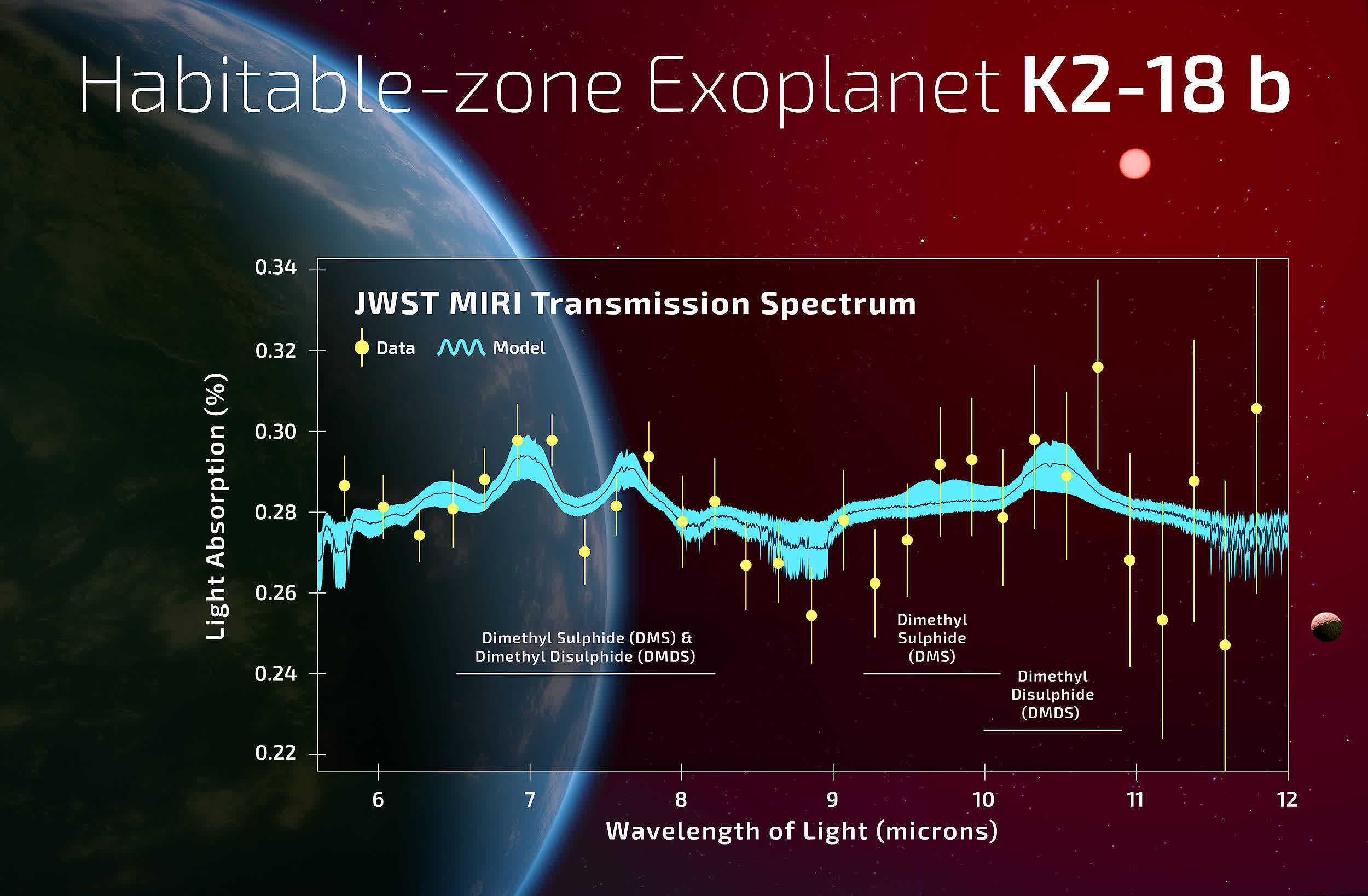What just happened? It’s one of humanity’s oldest questions: are we alone in the universe? A team of researchers has found new evidence that there may be life on a planet two and a half times the size of Earth in another solar system. But don’t get too excited just yet.
A team of Cambridge researchers studying the atmosphere of a planet called K2-18b discovered chemical signatures of dimethyl sulphide (DMS) and dimethyl disulphide (DMDS). The molecules are tied to biological life, produced by marine phytoplankton and bacteria here on Earth.
The amount of this gas detected during an observation window was thousands of times higher than what we have on Earth, lead researcher Prof Nikku Madhusudhan told the BBC.
While the find is exciting, more data is required to ensure the results are accurate.
“This is the strongest evidence yet there is possibly life out there. I can realistically say that we can confirm this signal within one to two years,” said Madhusudhan.
The discovery was made by Nasa’s James Webb Space Telescope (JWST). It can analyze K2-18b’s atmosphere from the light that passes through, emitted by the small red sun that the planet orbits.
Study co-author Mans Holmberg told The Washington Post that the planet could have an atmosphere rich in hydrogen and an ocean deeper than any found on Earth.
Researchers need a five sigma result, or to be 99.9999% certain, to declare a discovery. It means there is a very low probability (around one in 3.5 million) that the observed data could be due to random fluctuations or noise. The latest results are three sigma, which, while 99.7% certain, is not enough. 18 months ago, the team obtained a one sigma result of 68%.
Some scientists warn that even achieving a five sigma result does not conclusively prove that life exists on the planet. Prof Catherine Heymans of Edinburgh University and Scotland’s Astronomer Royal said the detected gases could be produced by geological activity on the planet. The Cambridge team is working with other groups to see if DMS and DMDS can be produced by non-living means in the lab.
K2-18b is seven hundred trillion miles, or 120 light-years, away from Earth. It weighs 8.6 times more than our planet and has a diameter 2.6 times larger.
Source link
